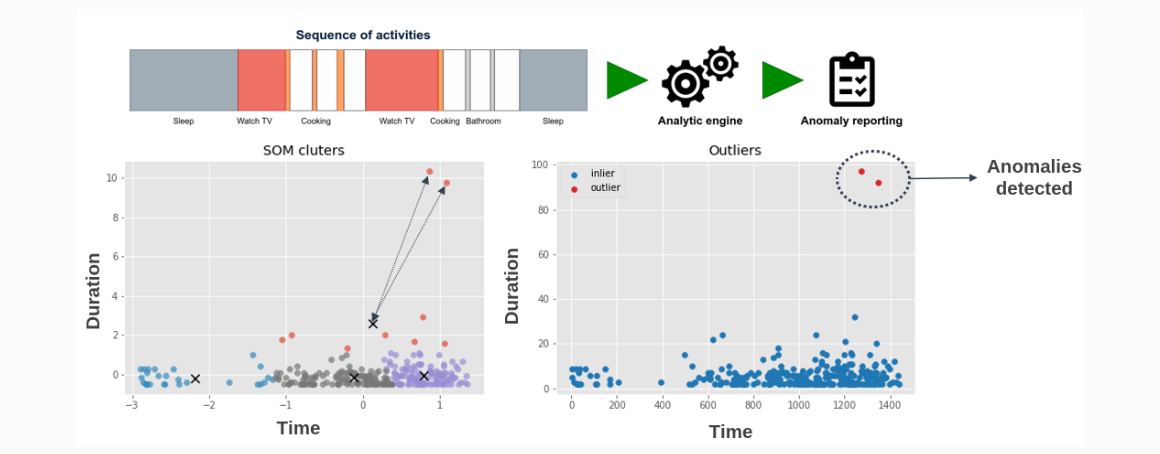TREE’s anomaly detection Digital Solution
An early sign of decline in the health of elder people is the sudden changes in their routine. Because of that, monitoring the activities elder people during the day can be useful. This can be done using non-invasive intelligent devices (IoT) such as a smart band or smart sensors.
In the context of the SHAPES project, the monitoring of the daily activities is being done with smart plugs and the Xiaomi MiBand 3, both devices can be used without interfering in people’s lives.
Using the data coming from the smart plugs TREE can detect different activities and analyse them to find anomalous changes in the user’s routine. Specifically, TREE’s solution can detect four types of anomalies:
– Activities that last longer than usual: one example could be leaving the TV on for several hours.
– Activities that start at an unusual hour: e.g., turning on the washing machine at 3AM.
– Activities that last longer than expected and start at an unusual time: e.g., using the microwave at 2AM for one hour.
– Absence of an activity: e.g., not using the fridge in a week.
To detect the anomalies TREE uses self-organizing maps (SOM). This algorithm groups common patterns for every activity monitored and detects anomalies based on how far an activity is from all the groups formed.
This Digital Solution first processes the different sequence of activities detected by the sensor network. After separating all the activities, the algorithm is performed in each one establishing the specific routines related to each device monitored. Finally, considering the routines, we establish the anomalies based on how far an activity is from the normal behaviour.
An example of anomaly is depicted in Figure 1 above, the activity represented corresponds to watching the TV and it was monitored for three months. Each dot represents when the user started to watch the TV (x axis) and for how long (y axis). This person tends to watch TV throughout the day but always for short periods of time. The algorithm correctly detected two anomalies when the person watched the TV for almost two hours.
In summary, TREE’s solution can detect clear anomalies in the patients’ routine using an algorithm that is flexible, fast and unsupervised so it can be scaled.


